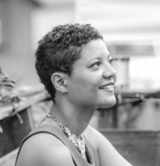Summary
Of South Africa’s total population, 92% are people of color. In Design however, it’s less than 9%. As a Cape Colored Designer, this made having an identity that my fellow designers could relate to extremely difficult as I am neither Black nor White. In order to navigate a post-apartheid country, I had to realize that belonging nowhere could mean that I, in fact, could belong everywhere. This talk is about the “Cultural Edge Effect” of my heritage and how that has helped me build Enterprise Design teams and attract and build the diverse design skills of South Africa’s future.
Key Insights
-
•
South Africa’s apartheid history still deeply influences current societal and professional dynamics, including in design.
-
•
Being culturally 'on the edge' or excluded can provide broader perspectives and foster greater inclusivity.
-
•
The edu effect from ecology describes how merging distinct environments enhances diversity and resilience, applicable to cultural and team settings.
-
•
The design industry in South Africa struggles with racial representation, with a significant lack of designers of color in visible roles.
-
•
Hiring challenges often stem from an availability bias and a lack of investment in cultivating diverse talent pipelines.
-
•
Dean’s 'pot plant versus crab' metaphor illustrates different ways individuals grow: dependency on external conditions versus growth through shedding comfort zones and vulnerability.
-
•
Discomfort and vulnerability are essential and natural parts of personal and team growth.
-
•
Cognitive biases like the end of history illusion cause people to underestimate how much future experiences will change them.
-
•
Starting relationships and hiring processes at 'level one' helps acknowledge each person’s full humanity beyond roles or stereotypes.
-
•
Building supportive peer communities is crucial for navigating vulnerability and fostering resilience during growth phases.
Notable Quotes
"Not belonging anywhere meant I had access everywhere."
"You’re trying to pick fruit from a tree that you are yet to plant."
"Try and care less about being certain and more about being effective."
"Society grows great when old people plant trees they know they shall never sit in."
"Don’t be a pot plant, be a crab."
"Pot plants need somebody else to provide nutrients and container for growth, but crabs have to shed their shell to grow larger."
"When crabs shed their shell they are vulnerable and come together in large numbers for protection."
"Our brains want shortcuts; they don’t like infinite categorization, which is why people fear those on the edges."
"Every time you meet someone new or join a new organization, start at level one with them."
"If you want to go fast, you go alone. If you want to go far, you go together."
Or choose a question:
















More Videos

"The hardest part about remote is making design reviews feel collaborative and team-based."
Adam Cutler Karen Pascoe Ian Swinson Susan WorthmanDiscussion
June 8, 2016

"Playing politics in UX leadership is about maximizing relationships ethically to advance your agenda, not about being underhanded."
Peter MerholzThe Trials and Tribulations of Directors of UX (Videoconference)
July 13, 2023

"In the automotive industry, most safety standards only became mandatory after governments intervened."
Lisa WelchmanCleaning Up Our Mess: Digital Governance for Designers
June 14, 2018

"The solutions are out there; we just need the will to implement them."
Vincent BrathwaiteOpener: Past, Present, and Future—Closing the Racial Divide in Design Teams
October 22, 2020

"Psychological safety was far and away the key ingredient for teams being effective."
Brenna FallonLearning Over Outcomes
October 24, 2019

"Thick data is the opposite of big data; it’s stories, qualitative, and crucial during moments of rapid change."
Tricia WangSpatial Collapse: Designing for Emergent Culture
January 8, 2024

"Delivering research in small, lean increments allowed us to iterate fast and reduce bias."
Edgar Anzaldua MorenoUsing Research to Determine Unique Value Proposition
March 11, 2021
"Context-related data gathered through qualitative research is the first to reach our decision-making centers in the brain."
Designing Systems at Scale
November 7, 2018

"Conversion design means to create intentional change."
Erin WeigelGet Your Whole Team Testing to Design for Impact
July 24, 2024
















